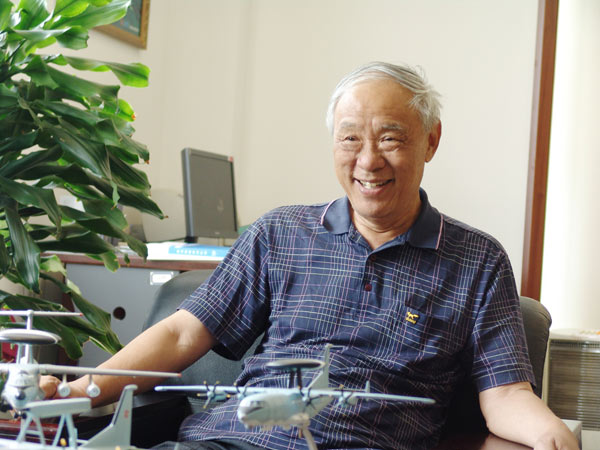Expert lifts lid on surveillance aircraft
Updated: 2013-01-28 20:09
(Xinhua)
|
|||||||||||
|

|
| File photo of Wang Xiaomo taken in May 2011.[Photo/Asianewsphoto] |
Wang Xiaomo, 74, regarded as the "father" of AEWC in China, said that the country has developed a complete AEWC aircraft series with its own technology, the People's Daily reported on Monday.
"We're confident of producing more advanced early warning planes with smaller sizes, lower costs, multiple functions and constantly updated models," the paper quoted Wang as saying.
Wang, a member of the Chinese Academy of Engineering, won China's top science award this month for his contribution to the construction of the country's air defense network in the past 30 years.
China started the development of its first AEWC aircraft, Kongjing-1, in the 1960s, but the project was suspended due to problems including ground clutter affecting radar performance.
The research was resumed again in the early 1990s in the wake of the worldwide transformation of militaries from labor-intensive to technology-intensive forces capable of joint operations in modern warfare. The resumption of research on the state-of-the-art technology was endorsed by the government, said Wang.
After the Gulf War ended in 1991, China began to seek cooperation with other countries to build up the core technology of manufacturing AEWC aircraft. Wang was appointed chief designer on the China side.
However, partners suddenly stopped cooperating after interference from the United States, remembered Wang, adding that this was a very tense time for the Chinese researchers.
Soon afterwards, Wang, along with dozens of other military scientists, submitted a letter to the central government, asking for a reboot by themselves.
"The termination of the cooperation delayed China's use of the early warning plane, but accelerated our independent research and development," the prize-winning scientist told the People's Daily.
Hard toil followed for Wang and his team. In addition to complicated technological obstacles including electromagnetic compatibility problems, researchers had to bear high temperatures in the Gobi desert and noisy environments on the plane.
"The manufacture of the AEWC aircraft was a huge and complicated feat of engineering; any small mistake could have led to failure. Without joint efforts by thousands of researchers, we couldn't have done it," Wang said.
China's AEWC aircraft made its first public appearance in 2009 when the long-range Kongjing-2000 and two other smaller Kongjing-200 aircraft were showcased at the military parade celebrating the 60th anniversary of the founding of new China.
The Kongjing-2000 is China's first generation of military AEWC systems developed with its own technology. The plane was first deployed in around the year 2004 after decades of trade embargoes by Western countries and unsuccessful attempts to acquire a Russian-made equivalent.
Able to process comprehensive information and long-range detection through its high-tech radar, the Kongjing-2000 can track dozens of aerial targets and guide the army's fighters to intercept enemy aircraft far beyond their own detection range.
Related Stories
Awards recognize scientists 2013-01-18 23:48
Today's Top News
Police continue manhunt for 2nd bombing suspect
H7N9 flu transmission studied
8% growth predicted for Q2
Nuke reactor gets foreign contract
First couple on Time's list of most influential
'Green' awareness levels drop in Beijing
Palace Museum spruces up
Trading channels 'need to broaden'
Hot Topics
Lunar probe , China growth forecasts, Emission rules get tougher, China seen through 'colored lens', International board,
Editor's Picks

|

|

|

|

|

|





